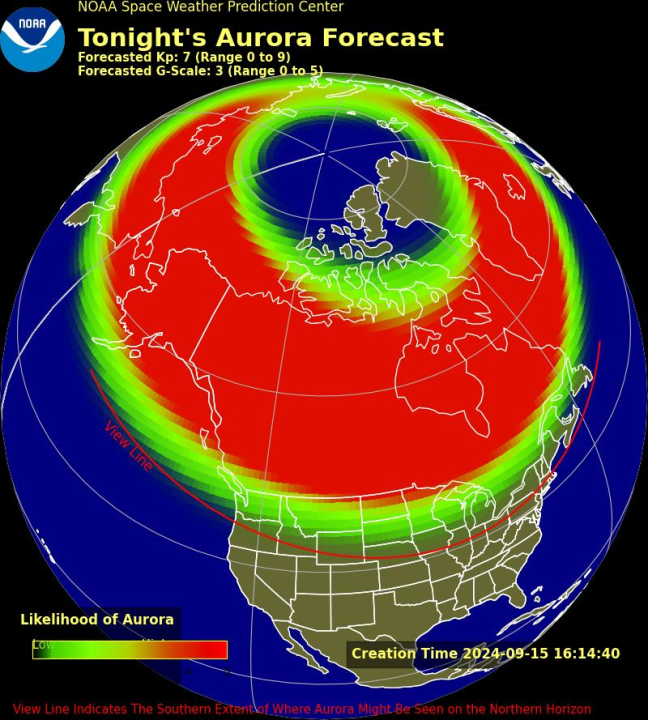(NEXSTAR) — The sun, going through an active bout of Solar Cycle 25, spit out another intense flare over the weekend, bringing parts of the U.S. yet another chance at seeing the northern lights.
On Saturday, NOAA’s Space Weather Prediction Center reported an X4.5 solar flare had been detected. The agency shared video of the flare, showing the moment the sun appears to spit out some solar material.
X-class flares are the strongest measured by space weather experts, with the largest ever recorded being an X45 flare detected in 2003. On Dec. 21, 2023, the SWPC recorded an X5 flare, which was the strongest since an X8.2 flare in 2017.
Following Saturday’s flare — which was described as “generally not common, although not necessarily unusual” — the SWPC said strong, G3-level geomagnetic storms are likely Sunday into Monday.
The agency warned some users of high-frequency communication bands (like emergency managers) may notice “strong degradation or signal loss.” The agency also acknowledged there may be impacts to power systems, spacecraft, and navigation and GPS systems — all areas that experts say are prepared for such events. The storming may also make the northern lights shine.
The northern lights are sparked by the plasma and magnetic material hurled out by the sun hitting our magnetic field, sending particles flowing to the poles. When those particles interact with oxygen and nitrogen in our atmosphere, they can cause excess energy that appears as bursts of light to us. The colors that we see are the result of the gases involved and where the action is happening.
A G3 storm lands in the center of the five-point scale the SWPC uses to measure geomagnetic storms sparked by solar flares. Storms of this strength have been known to bring the northern lights as far south as Illinois and Oregon, and according to the SWPC’s forecasting, that may just be the case with this storm.
The SWPC’s forecast, seen below, shows the aurora could be visible in at least 22 states Sunday night: Alaska, Washington, Oregon, Idaho, Montana, Wyoming, North Dakota, South Dakota, Nebraska, Minnesota, Iowa, Wisconsin, Illinois, Michigan, Indiana, Ohio, Pennsylvania, New York, Massachusetts, New Hampshire, Vermont, and Maine.
Areas in red have the highest likelihood of seeing the northern lights, while those in green have a lower likelihood. For those in areas at or near the red line, known as the view line, the aurora may be visible along the northern horizon — but you may need to rely on your smartphone to see them.

According to the SWPC, the strongest storming — and potentially the best time to see the northern lights — will begin around 1 a.m. ET Monday morning and improve around 4 a.m. ET. Unfortunately, your chances of seeing the northern lights are likely to diminish as the sun comes up.
Conditions are expected to weaken into Monday night, the SWPC forecast shows. They may still be strong enough to bring the northern lights as far south as northern Iowa and southern Wisconsin. Space weather forecasting can change rapidly though, so it’s possible conditions could improve for auroral viewing on Monday night.
We also know solar activity is likely to continue over the next year or two. The sun is progressing through an active pattern known as Solar Cycle 25 in which it flips its poles. As we near the peak of that 11-year cycle, researchers say we can expect to see more strong solar storms — and, hopefully, more strong bouts of the northern lights.

